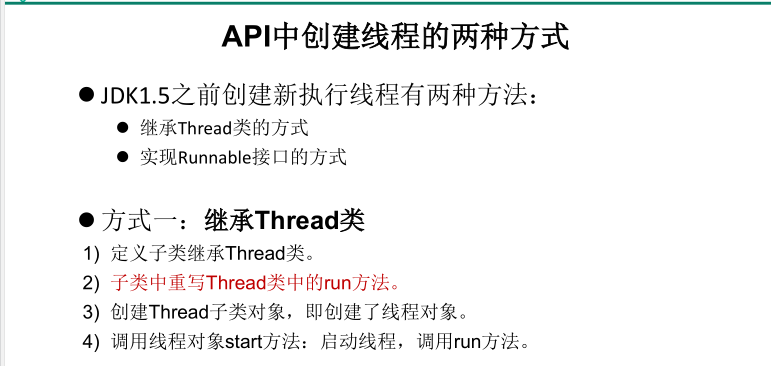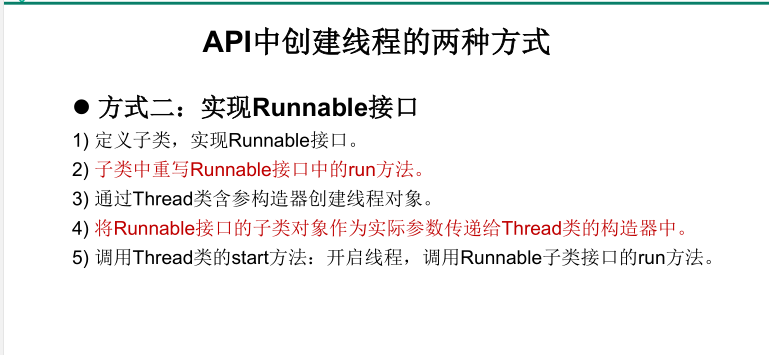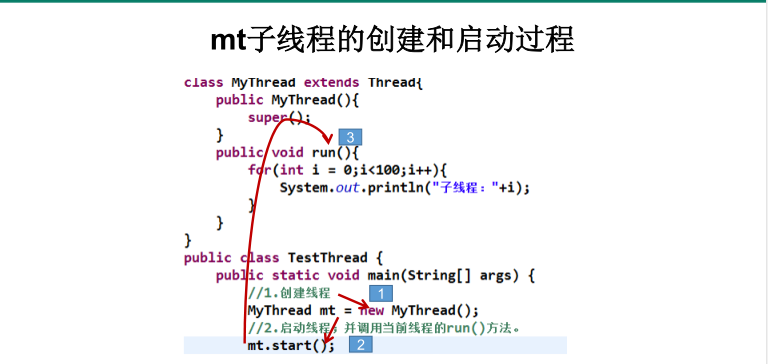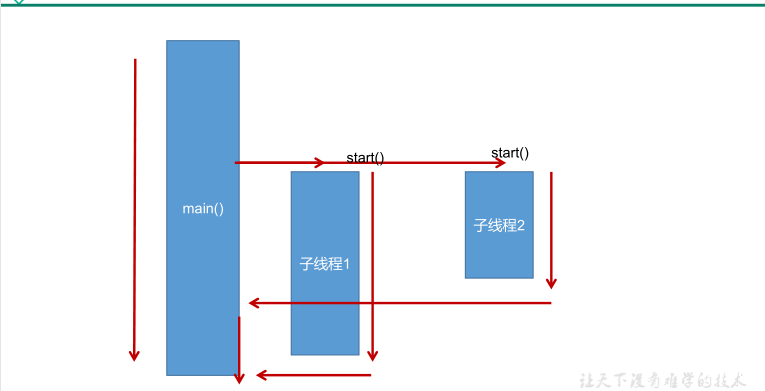



继承方式和实现方式的联系与区别
public class Thread extends Object implements Runnable
区别
继承Thread:线程代码存放Thread子类run方法中。
实现Runnable:线程代码存在接口的子类的run方法。
实现方式的好处
避免了单继承的局限性
多个线程可以共享同一个接口实现类的对象,非常适合多个相同线
程来处理同一份资源。
/**
* 创建多线程的方式二:实现Runnable接口
* 1. 创建一个实现了Runnable接口的类
* 2. 实现类去实现Runnable中的抽象方法:run()
* 3. 创建实现类的对象
* 4. 将此对象作为参数传递到Thread类的构造器中,创建Thread类的对象
* 5. 通过Thread类的对象调用start()
*
*
* 比较创建线程的两种方式。
* 开发中:优先选择:实现Runnable接口的方式
* 原因:1. 实现的方式没有类的单继承性的局限性
* 2. 实现的方式更适合来处理多个线程有共享数据的情况。
*
* 联系:public class Thread implements Runnable
* 相同点:两种方式都需要重写run(),将线程要执行的逻辑声明在run()中。
*
* @author ch
* @create 2019-02-13 下午 4:34
*/
Runnable源码展示:
/* * Copyright (c) 1994, 2013, Oracle and/or its affiliates. All rights reserved. * ORACLE PROPRIETARY/CONFIDENTIAL. Use is subject to license terms. */ package java.lang; /** * The <code>Runnable</code> interface should be implemented by any * class whose instances are intended to be executed by a thread. The * class must define a method of no arguments called <code>run</code>. * <p> * This interface is designed to provide a common protocol for objects that * wish to execute code while they are active. For example, * <code>Runnable</code> is implemented by class <code>Thread</code>. * Being active simply means that a thread has been started and has not * yet been stopped. * <p> * In addition, <code>Runnable</code> provides the means for a class to be * active while not subclassing <code>Thread</code>. A class that implements * <code>Runnable</code> can run without subclassing <code>Thread</code> * by instantiating a <code>Thread</code> instance and passing itself in * as the target. In most cases, the <code>Runnable</code> interface should * be used if you are only planning to override the <code>run()</code> * method and no other <code>Thread</code> methods. * This is important because classes should not be subclassed * unless the programmer intends on modifying or enhancing the fundamental * behavior of the class. * * @author Arthur van Hoff * @see java.lang.Thread * @see java.util.concurrent.Callable * @since JDK1.0 */ @FunctionalInterface public interface Runnable { /** * When an object implementing interface <code>Runnable</code> is used * to create a thread, starting the thread causes the object's * <code>run</code> method to be called in that separately executing * thread. * <p> * The general contract of the method <code>run</code> is that it may * take any action whatsoever. * * @see java.lang.Thread#run() */ public abstract void run(); }